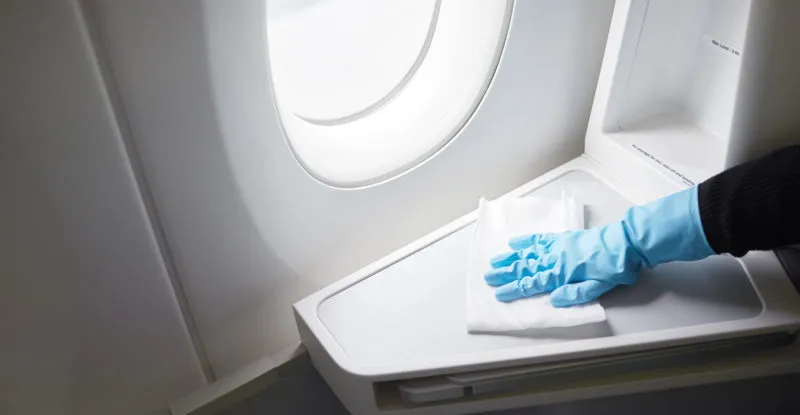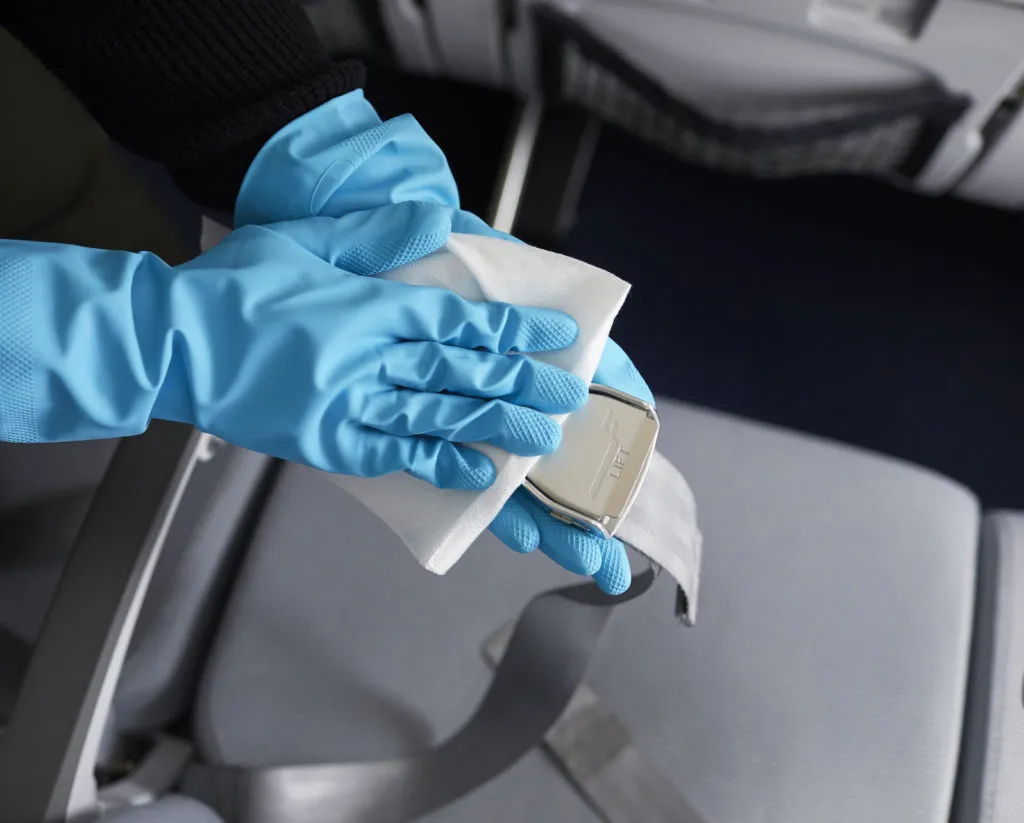As airlines worldwide continue their additional cleaning and disinfection protocols in order to combat the risk of onboard spread of the SARS-CoV-2 coronavirus that causes COVID-19, the US Federal Aviation Administration is issuing an airworthiness bulletin warning of aviation safety risks from some of these protocols.
The bulletin — Special Airworthiness Information Bulletin NM-20-17 — highlights risks including corrosion, embrittlement, increased flammability and electrical short circuit. “Depending on the system or part affected,” the FAA says, “any of these conditions could create either an immediate or latent airworthiness issue.”
The FAA runs through nine separate sections of advice over two pages, suggesting no little concern on the subject.
Some of the advice is obvious: read the label, apply the disinfectant as directed, do not fog flammable disinfectants like alcohol that could create a potential explosion, make sure that alcohol wipes are not stored where they might become a fire risk, and so on.
But the FAA also highlights areas that might not be immediately apparent to airlines, cleaning services or subcontractors: for example, the potential for fogged or misted disinfectants to collect and pool into areas where they may cause a hazard, like electronics.
Airlines and operators are particularly warned against using liquid disinfectant in flight decks, where the consequences could be similar to the occasional yet well-publicised example of flight crew dropping coffee onto delicate equipment.
Notably, the FAA highlights that ethyl alcohol (ethanol) based disinfectants (which many airlines are handing out to passengers in the form of individual wipes) can damage windows, window dust covers and thermoplastics, with a certain amount of understatement when it says “windows on certain aircraft types might not be able to continue to serve their intended purpose after multiple cleanings”.
The bulletin highlights that the FAA generally recommennds electrostatic spraying rather than electrostatic fogging because it provides “more directional control” in terms of size or pressure of disinfectant particle. It is interesting to note that the agency highlights aircraft ventilation, a subject of much interest this year and into the future, as a risk factor here.
On the one hand, the FAA notes, spraying and fogging with the system off will, in general, “reduce the risk of unintended application” — counter to the recommendations to leave ventilation systems running on the ground — but also underlines that airframers are continuing to assess the implications.
The FAA particularly notes that airlines should be especially careful with antimicrobial coatings, the incorporation of which looks set to be one of the key post-COVID-19 changes to the aviation industry. Says the agency, “any alteration of the material properties of the surface upon which such coating is applied could be more immediate than another disinfecting treatment because the antimicrobial coating persists on the surface.”
Extra inspection of areas of the aircraft where corrosion is a possibility is recommended too, while the FAA flags up that both UV and ionisation-based disinfection is still under investigation, and “advises that owners and operators use caution with any method of disinfection, including ultraviolet radiation and ionization, and consider the potential short term and long term consequences, not just on the equipment and furnishings deliberately treated, but also on any equipment and furnishings that could be exposed during the disinfecting process”.
With much of the aircraft interiors supplier industry spending so much of this year testing and verifying the compatibility of their products with a variety of cleaning and disinfecting chemicals, it is notable that the FAA is, however, still calling this an “airworthiness concern”, and not “an unsafe condition that would warrant an airworthiness directive”. After dropping the ball so very publicly with the Boeing 737 MAX, is the FAA doing enough here to ensure that novel products and procedures are not contributing to hidden or long-term safety problems?
Related Articles:
- Designing the direction of cabin airflow in the face of COVID
- Hygiene expectations post-COVID: a generation of Naomi Campbells?
- Need for hygiene standards for cabin surfaces in the spotlight
- Latitude Aero shifts focus to aircraft cleaning and decontamination
- Boeing seeks to build confidence in air travel through data
- Qatar Airways taps Honeywell for UV cabin cleaning system
- The challenges of incorporating antimicrobial materials into the cabin
- Designing aircraft cabin hygiene for the long-term
- Lufthansa Technik tests long-lasting virucide for aircraft cabins
Main image credit, Finnair.














